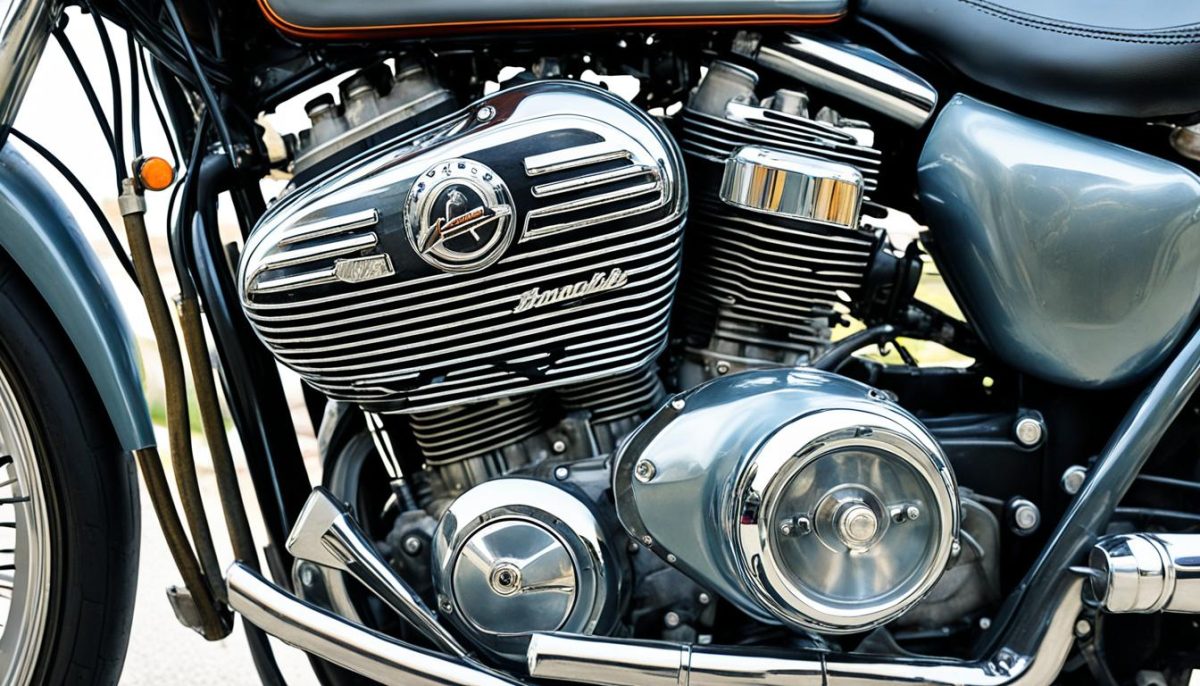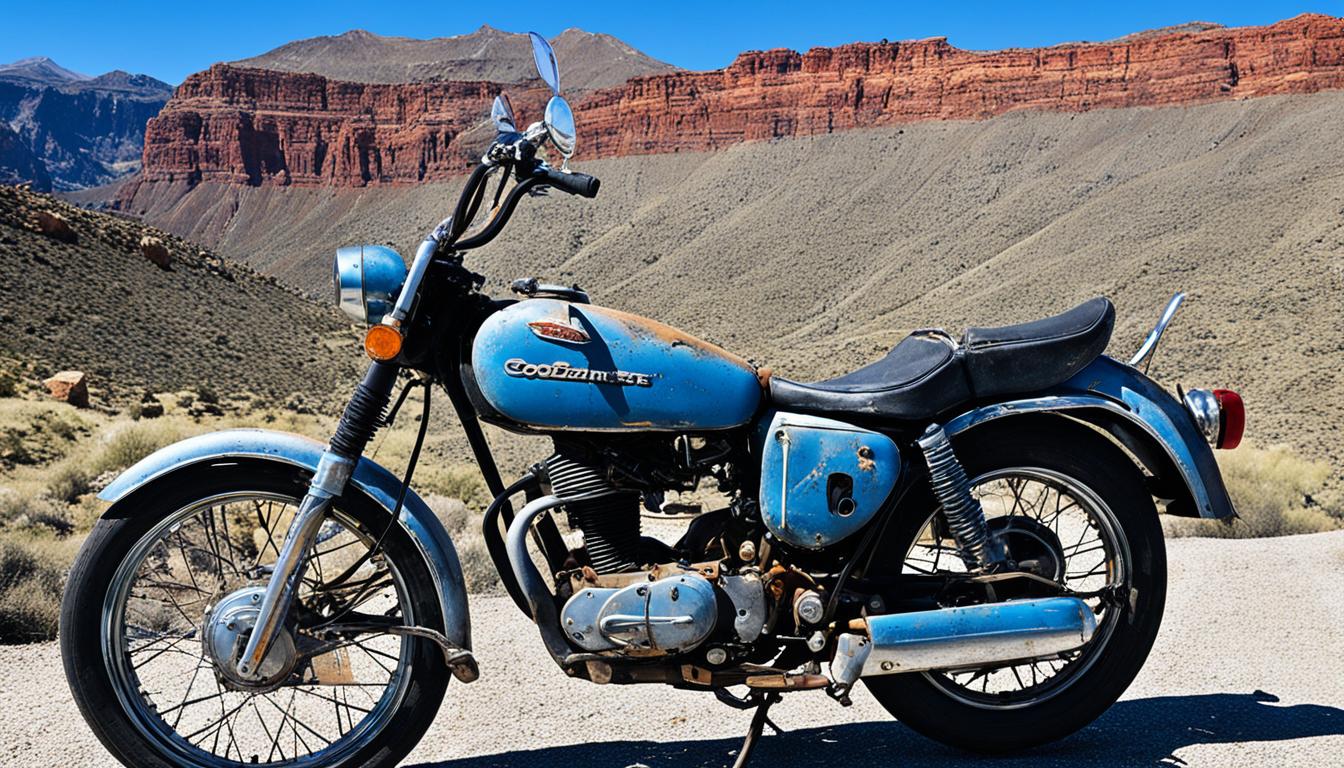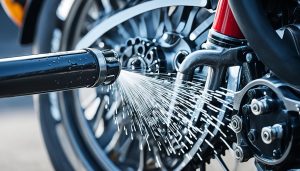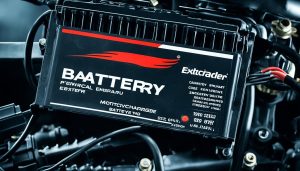When it comes to motorcycles, mileage is a crucial factor that can significantly impact their performance and lifespan. But what exactly is considered high mileage for a motorcycle? In this section, we will explore this question and provide you with valuable insights into motorcycle mileage.
Whether you ride your motorcycle daily or occasionally, understanding what is considered high mileage is essential for making informed decisions about maintenance, repairs, and even when it may be time to sell or trade in your bike.
High mileage for a motorcycle can vary depending on several factors, including the make and model of the bike, riding conditions, and overall maintenance. While some motorcycles may start experiencing performance issues at 20,000 miles, others might still run smoothly after reaching 50,000 miles or more.
In the upcoming sections, we will delve deeper into the factors that determine high mileage for motorcycles, provide practical maintenance tips for high mileage bikes, discuss performance considerations, and share strategies to extend the lifespan of your high mileage motorcycle. We will also explore when to consider selling or trading in your bike and the potential value that can be found in high mileage motorcycles.
Whether you’re a passionate rider or a motorcycle enthusiast, this article will equip you with the knowledge and insights you need to make informed decisions regarding your high mileage motorcycle.
Factors that Determine High Mileage for Motorcycles
When it comes to determining what is considered high mileage for motorcycles, several factors come into play. These factors can significantly impact the overall mileage of a bike and its longevity. By understanding these factors, riders can better gauge the wear and tear on their motorcycles and take appropriate measures to maintain their performance.
Riding Conditions
The riding conditions play a crucial role in influencing motorcycle mileage. Various factors, such as road conditions, weather, and terrain, can affect fuel efficiency and overall mileage. Riding on smooth highways with favorable weather conditions typically allows for better mileage compared to off-road or challenging terrains.
Maintenance and Upkeep
Proper maintenance is essential for optimizing a motorcycle’s mileage. Regular servicing, such as oil changes, filter replacements, and tune-ups, can ensure that the bike runs efficiently and reduces the risk of excessive wear and tear on its components. Neglecting maintenance can lead to decreased mileage and potentially costly repairs.
Overall Usage
The way a motorcycle is used can also impact its mileage. Aggressive riding styles, such as constant high-speed acceleration and braking, can decrease fuel efficiency and increase wear on the engine and other components. Conversely, a more conservative riding style, with smooth acceleration and deceleration, can improve mileage and extend the lifespan of the bike.
“Proper maintenance is essential for optimizing a motorcycle’s mileage.”
Motorcycle Age and Condition
The age and overall condition of a motorcycle can also influence its mileage. Older bikes or those with worn-out parts may experience reduced fuel efficiency and increased mechanical issues, resulting in lower mileage. Regular inspections and addressing any necessary repairs promptly can help maintain the bike’s mileage as it ages.
Weight and Load
The weight and load carried by a motorcycle can have an impact on its mileage. Carrying excess luggage or riding with a passenger constantly can strain the engine and decrease fuel efficiency. It’s important to ensure that the bike is not overloaded beyond its recommended weight limit to maintain optimal mileage.
By considering these factors and implementing appropriate measures, riders can maximize the mileage and overall performance of their motorcycles. Regular maintenance, conscious riding habits, and being mindful of load and riding conditions can contribute to an efficient and long-lasting riding experience.
| Factors | Impact on Motorcycle Mileage |
|---|---|
| Riding Conditions | Can vary based on road conditions, weather, and terrain |
| Maintenance and Upkeep | Regular maintenance ensures optimal performance and mileage |
| Overall Usage | Riding style affects fuel efficiency and engine wear |
| Motorcycle Age and Condition | Older bikes and worn-out parts may lead to decreased mileage |
| Weight and Load | Excess weight can strain the engine and reduce fuel efficiency |
Maintenance Tips for High Mileage Motorcycles
When it comes to high mileage motorcycles, proper maintenance is key to keeping your bike in optimal condition for years to come. Here are some essential tips to help you maintain your high mileage bike:
1. Regular Oil Changes:
Oil is the lifeblood of your motorcycle’s engine, lubricating the internal components and reducing friction. Regular oil changes are crucial for high mileage bikes as they help remove contaminants and optimize engine performance. Consult your owner’s manual for the recommended oil change intervals based on mileage and follow them diligently.
2. Inspect and Replace Filters:
The air and fuel filters in your motorcycle play a vital role in maintaining proper combustion. Over time, these filters can become clogged with dirt and debris, affecting performance and fuel efficiency. Regularly inspect and clean or replace these filters to ensure uninterrupted airflow and proper fuel delivery.
3. Check and Adjust Valve Clearance:
Valve clearance refers to the gap between the engine’s valve stem and the rocker arm or camshaft. With high mileage, these clearances can change, impacting engine performance and fuel economy. Regularly check and adjust the valve clearance according to your manufacturer’s specifications to keep your engine running smoothly.
4. Monitor Tire Wear and Pressure:
The condition of your tires plays a crucial role in your motorcycle’s safety and handling. Check the tire wear regularly, looking for signs of uneven wear or bald patches. Additionally, ensure that the tire pressure is within the recommended range as specified by the manufacturer. Proper tire maintenance will enhance traction, stability, and overall performance.
5. Maintain Proper Chain Tension and Lubrication:
If your high mileage motorcycle features a chain-driven system, it’s vital to keep the chain properly tensioned and lubricated. Over time, chains can stretch and become dry, leading to decreased performance and potential damage. Regularly inspect the chain tension and lubricate it with a suitable chain lubricant to prevent premature wear and maintain smooth power transfer.
6. Perform Regular Fluid Checks:
In addition to oil, there are other fluids in your motorcycle that require regular attention. Check and top up the brake fluid, coolant, and transmission fluid levels as per the manufacturer’s instructions. Proper fluid levels ensure optimal performance and prevent potential issues that can arise due to low or contaminated fluids.
7. Keep Electrical Components in Check:
Electrical components, such as the battery, spark plugs, and wiring, are essential for the proper functioning of your motorcycle. Regularly inspect these components for any signs of wear or corrosion. Replace worn-out spark plugs and ensure the battery is charged and in good condition. Additionally, check all electrical connections to ensure they are secure and free from corrosion.
By following these maintenance tips, you can effectively prolong the life of your high mileage motorcycle and enjoy many more miles of reliable and enjoyable riding.
Performance Considerations for High Mileage Motorcycles
When it comes to high mileage motorcycles, understanding the impact on performance is crucial for every rider. Over time, the effects of high mileage can be felt in various aspects of a bike’s performance. In this section, we’ll explore how engine wear, suspension, and other components may be affected by high mileage, and provide tips on how to maintain performance and address any challenges that may arise.
Effects of High Mileage on Motorcycle Performance
As a motorcycle accumulates high mileage, it’s natural for the engine to experience wear and tear. The continuous combustion process, coupled with high RPMs, can lead to reduced compression ratios, loss of power, and decreased fuel efficiency. Additionally, the lubrication system may encounter challenges, causing increased friction between moving parts and potential overheating.
Another area of concern is the suspension system. With higher mileage, the suspension components may start to exhibit signs of wear, leading to reduced shock absorption and compromised handling. This can result in a less comfortable ride and decreased stability, affecting both the safety and enjoyment of your motorcycle.
Furthermore, high mileage can impact the overall condition of other critical parts, such as the brakes, tires, and transmission. Frequent braking and intense friction can wear down brake pads and affect braking efficiency. Tires may show signs of uneven wear and reduced traction, compromising grip and responsiveness. The transmission may also experience increased resistance and gear shifting difficulties.
Maintaining Performance with High Mileage Motorcycles
While high mileage can present challenges, there are steps you can take to maintain performance and keep your motorcycle running smoothly:
- Regular maintenance: Adhering to a comprehensive maintenance schedule is essential for high mileage motorcycles. This includes routine oil changes, filter replacements, and spark plug inspections. Regularly check and adjust valve clearances, as well as calibrate the carburetor or fuel injection system as needed.
- Fluid checks: Monitor fluid levels, including coolant, brake fluid, and transmission oil, to ensure proper lubrication and cooling. Regularly replace fluids that have become contaminated or degraded.
- Suspension maintenance: Inspect and service the suspension components, including the fork seals and shock absorbers. Replace worn-out parts and adjust settings to maintain optimal performance.
- Tire care: Regularly check tire pressure and tread wear. Replace tires when the tread depth is below recommended levels to ensure proper grip and handling.
- Brake system checks: Routinely inspect brake pads, discs, and calipers for wear. Replace any components that are excessively worn or damaged to maintain reliable braking performance.
By following these maintenance practices, you can mitigate the effects of high mileage on your motorcycle’s performance, preserving its power, handling, and overall functionality.

Investing time and effort into proper maintenance is essential for maximizing the performance and longevity of your high mileage motorcycle. By understanding the effects of high mileage and implementing regular upkeep, you can continue to enjoy a smooth and satisfying riding experience for years to come.
Extending the Lifespan of a High Mileage Motorcycle
When it comes to high mileage motorcycles, proper maintenance and care are essential for ensuring their longevity. Whether you’re a passionate rider or rely on your motorcycle for daily commuting, these tips and strategies will help you increase the lifespan of your high mileage bike.
Routine Maintenance
Regular maintenance is crucial for any motorcycle, especially one with high mileage. It’s important to follow the manufacturer’s maintenance schedule and carry out routine inspections to identify and address any issues promptly. From oil changes to spark plug replacements, adhering to a comprehensive and consistent maintenance routine can significantly extend the life of your motorcycle.
Fluids and Lubrication
Fluids play a vital role in keeping your motorcycle’s engine and other components running smoothly. Regularly check and replace fluids such as oil, coolant, and brake fluid as recommended by the manufacturer. Additionally, proper lubrication of moving parts, such as the chain, is essential for reducing wear and tear and prolonging the life of your bike.
Quality Parts and Components
When it comes to repairing or replacing parts on your high mileage motorcycle, it’s essential to invest in quality components. Genuine OEM (Original Equipment Manufacturer) parts are specifically designed for your bike’s make and model and are more likely to provide optimal performance and durability. Using high-quality aftermarket parts can also be an excellent option, but ensure they meet the necessary specifications and are sourced from reputable brands.
Proper Riding Techniques
Alongside maintenance, your riding techniques can have a significant impact on the lifespan of your motorcycle. Avoid harsh acceleration and sudden braking, as these behaviors can put unnecessary strain on the engine and other vital components. Smooth and controlled riding not only improves your safety but also helps to reduce wear and tear on your high mileage bike.
Protective Storage
When your motorcycle is not in use, proper storage can help protect it from the elements and minimize potential damage. If you don’t have access to a garage, consider investing in a motorcycle cover to shield your bike from sun, rain, and other environmental factors. Additionally, utilizing a secure lock or alarm system can provide added security and peace of mind.
By following these tips and strategies, you can extend the lifespan of your high mileage motorcycle and continue enjoying the open road for many more miles to come. Remember, proper maintenance, quality parts, and responsible riding are key to maximizing the longevity of your bike.
When to Consider Selling or Trading in a High Mileage Motorcycle
Deciding to sell or trade in your high mileage motorcycle is a significant decision that requires careful consideration. There are several factors that can help you determine the right time to part ways with your bike and explore new options. Let’s explore these factors and guide you through the process.
Mileage and Market Value
One of the key considerations when selling or trading in a high mileage motorcycle is the impact it has on its market value. Generally, motorcycles with lower mileage tend to have higher resale values. However, this isn’t always the case, as certain models or well-maintained high mileage bikes can still hold their value.
It’s essential to research the market value of similar models with high mileage to gauge the potential selling or trade-in price for your motorcycle. Online platforms and motorcycle dealerships can provide valuable insights into the current market trends and demand for high mileage motorcycles.
Potential Repairs
As motorcycles accrue higher mileage, there is a higher likelihood of wear and tear on various components. This means that potential repairs might be required in the near future. When deciding whether to sell or trade in your high mileage motorcycle, it’s crucial to consider the cost and extent of these potential repairs.
If the cost of repairs exceeds the value of your bike or if significant repairs are imminent, it might be more beneficial to sell or trade in your motorcycle rather than invest in costly repairs.
Your Riding Needs and Preferences
Another essential consideration is whether your current high mileage motorcycle still meets your riding needs and preferences. As time goes on, you may find that your priorities have shifted, and a different type of motorcycle might better suit your lifestyle, riding style, or future adventures.
Take some time to reflect on how your high mileage motorcycle aligns with your current riding needs. If you find that it no longer fulfills your requirements or if you’re simply ready for a change, selling or trading in your bike can be a great way to find a motorcycle that better matches your preferences.
Keeping Memories and Sentimental Value
High mileage motorcycles often hold a special place in their owners’ hearts, as they represent countless memories from long rides, thrilling adventures, and cherished moments on the road. When considering whether to sell or trade in your high mileage motorcycle, it’s important to weigh the sentimental value against practical considerations.
If you have an emotional attachment or deep sentimental value to your bike, it might be worth holding onto it, even if it has high mileage. However, if the practical aspects outweigh the sentimental value, parting ways with your motorcycle can open up new opportunities and help you create new memories on a different bike.
Deciding when to sell or trade in a high mileage motorcycle is a personal decision that depends on various factors such as market value, potential repairs, your riding needs, and sentimental value. Take the time to assess these factors and make an informed decision that aligns with your goals and preferences.
Finding Value in High Mileage Motorcycles
When it comes to motorcycles, high mileage doesn’t necessarily mean low value. In fact, there are several potential advantages and benefits to buying a high mileage bike that is well-maintained. Let’s explore why purchasing a high mileage motorcycle can be a smart choice and how it can offer financial benefits.
One of the key benefits of buying a high mileage motorcycle is the potential cost savings. High mileage bikes are generally priced lower than their low mileage counterparts, making them more affordable for budget-conscious riders. Additionally, by opting for a high mileage motorcycle, you can often find a bike with a history of regular maintenance and repairs, which can give you peace of mind knowing that the bike has been well taken care of.
Furthermore, high mileage motorcycles have proven their durability and reliability by withstanding the test of time and miles. These bikes have already proven their ability to handle long distances and challenging road conditions. So, by choosing a well-maintained high mileage motorcycle, you can have confidence in its ability to continue performing well for many more miles.
Lastly, buying a high mileage motorcycle can also provide you with a unique sense of character and history. These bikes often come with stories of adventures and experiences that have shaped them over the years. Owning a high mileage motorcycle gives you the opportunity to become a part of that story and create your own memories on the road.




